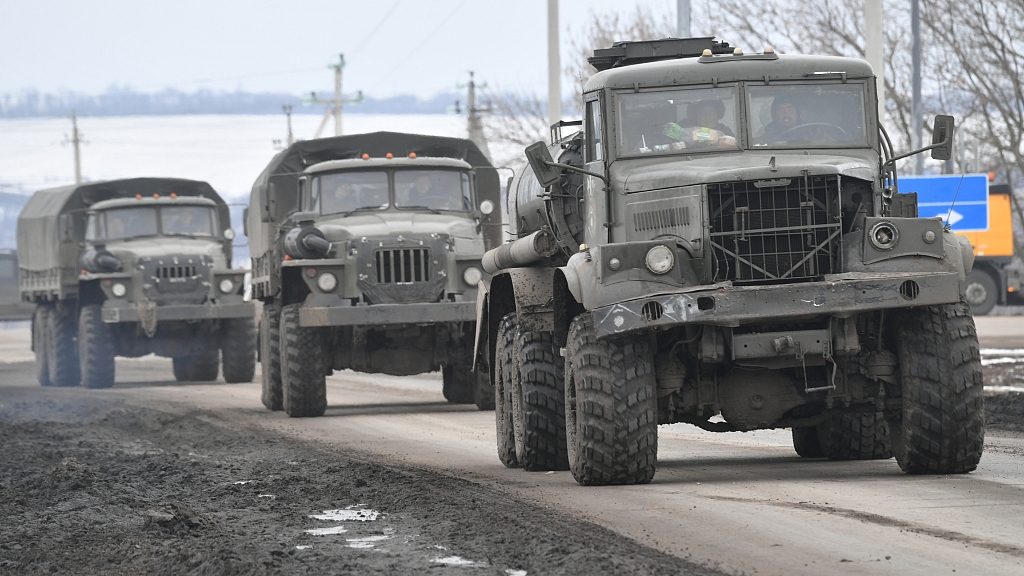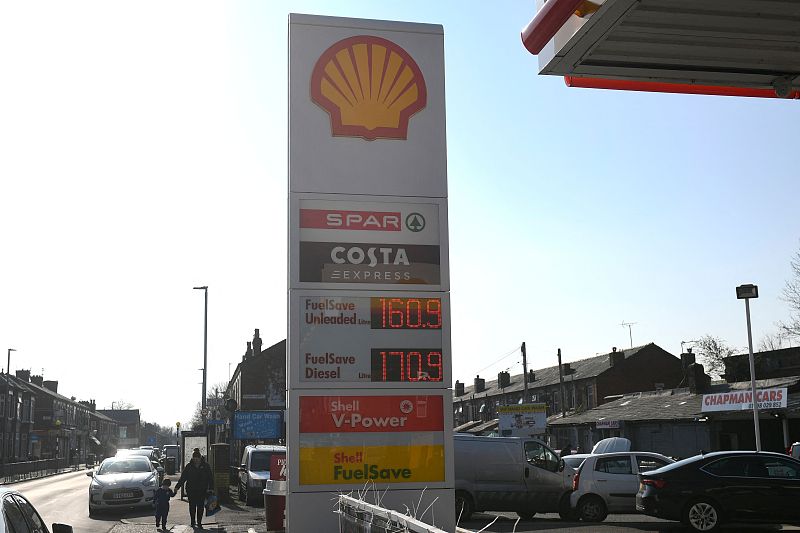
Military trucks drive along a road near the border between Russia and Ukraine in Belgorod region, Russia, February 28, 2022. /CFP
Military trucks drive along a road near the border between Russia and Ukraine in Belgorod region, Russia, February 28, 2022. /CFP
Editor's note: Alex Kassidiaris is a Global Security Advisor based in London, UK. He holds a master's degree from the War Studies Department of King's College London and his research interests include security and politics in the Eastern Mediterranean and Middle East.The article reflects the author's views and not necessarily those of CGTN.
Since the very beginning of the Russian "special military operation" in Ukraine, in late February of 2022, the European Union rushed to shape and impose a sanctions regime against the Russian Federation.
Since then, the EU implemented six packages of sanctions against Russia ranging from "targeted measures (individual sanctions)" to economic and diplomatic restrictions. The most important axes of this plan have been the economic sanctions and the imports/exports ban, particularly with regards to energy products.
Up to date, the EU planning has hardly reached any of its projected goals, while the negative impact on the European people is far more obvious than any problems caused to Moscow.
The so-called economic nuclear strike, Russia's ban from the SWIFT system is an interesting example. Russia's cut-off from the "world's leading provider of financial messaging" caused an initial shock and limited discomfort, but apart from the pompous headlines of Western major media, the actual effects have been rather minimal.
A series of emergency measures in Russia, including the increase of deposit rate from 9.5 percent to 20 percent and targeted capital controls on foreign currency moves and overseas payments, along with leveraging alternative networks such as the SPFS, the CIPS and even emerging fintech products, presented a swift solution to the SWIFT ban.
Looking at the energy sector, the European Council recently decided to gradually and partially ban the import of Russian crude oil and certain petroleum products. EU will materialize this plan within eight months, targeting to reduce 90 percent of Russian seaborne imports.
However, Bulgaria and Croatia will temporarily refrain from this ban while certain landlocked members states, such as Hungary and Slovakia, will keep importing Russian energy through pipelines.
This exceptions strategy, along with the fact that EU leaders struggled to reach consensus on the Russian sanctions, underline that the union was hardly ready for a full-scale financial confrontation with Moscow. Also, any thoughts on banning Russian gas imports still remain unrealistic.
The EU short-sighted policy is obvious when looking into numerous countries, including the union's de facto leader, Germany, which are heavily reliant on Russian energy. These countries are now struggling to discover alternative options, with the feasible choices being particularly limited.
Europe's inefficient and purposeless planning is also emphasized by the changes in EU's holy grail , the so-called Green Deal and the consecutive back and forth on the use of coal as a fossil fuel, following the Ukraine crisis.

Shell's logo is pictured at a Shell petrol station as the prices of petrol and diesel fuel continue to rise in Manchester, March 8, 2022. /CFP
Shell's logo is pictured at a Shell petrol station as the prices of petrol and diesel fuel continue to rise in Manchester, March 8, 2022. /CFP
The sanctions strategy so far has significantly raised the average energy costs across Eurozone. Back in 2014, following the Russian annexation of Crimea, oil prices saw a short spike before plummeting.
At that time, the United States fled the markets with shale oil, after the introduction of the new drilling techniques, like fracking. Concurrently, Saudi Arabia, one of OPEC's most important players, had the convenience to sustain low prices, in an effort to put pressure on the U.S. producers by minimizing their net profit margin, aiming to make shale production unviable in the long-term.
These unique circumstances led the oil prices into free fall from 2014 to 2016, occasionally below $30 per barrel. This was a major pressure point on the Russian economy at that time, while the access to energy remained cost-efficient for customers worldwide.
Things are diametrically different today. The U.S. shale production has slowed down significantly and the OPEC main powers are calculating much more rationally their next moves after the COVID-19 pandemic unprecedented shock and temporary crash of the energy markets.
The West and the EU in an effort to control the soaring prices, put much effort to convince OPEC to increase supply. However, this increase will be insignificant compared to the dimensions of the problem and the positive outcomes minimal. For now, Russia is enjoying a significant surge in energy revenue, while its national currency is outperforming,reaching a multi-year high.
On the other hand, European people are struggling with the rising costs of living; indicatively the average gasoline price in Eurozone increased by approximately 20 percent since February, with things expected to get worse.
The galloping inflation rates, the rising energy prices and the major disruption in the supply chain, due to the COVID-19 pandemic, the Ukraine war and additional unpredictable factors, like the Freeport LNG accident, have created the perfect storm.
As energy prices keep mounting and the EU is heading towards expensive imports, it seems that this plan has backfired. The negative impact on Europeans will become even heavier in the next months, possibly prompting their leaders to adopt a more responsible and efficient strategy, under the emerging socio-political pressure.
(If you want to contribute and have specific expertise, please contact us at opinions@cgtn.com. Follow @thouse_opinions on Twitter to discover the latest commentaries on CGTN Opinion Section.)

